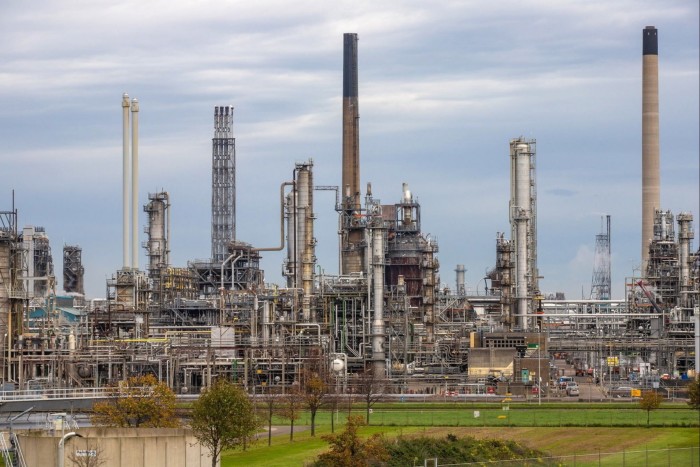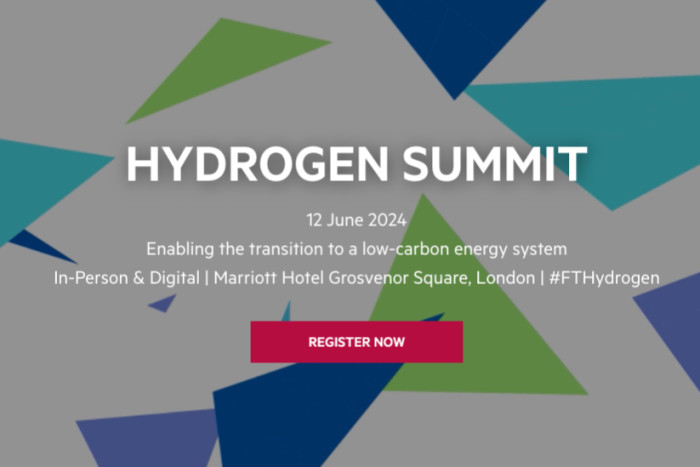At the Paris headquarters of the International Energy Agency (IEA), researchers tracking the development of hydrogen as a clean alternative to fossil fuels have a list of more than 100 pipelines for the gas in more than a dozen countries.
But the vast majority of these projects are either concepts or undergoing feasibility studies. Only one is actually under construction: a 30 km pipeline in the port of Rotterdam.
The Rotterdam project, launched last October, is the first part of a plan to build a European hydrogen network that could reach 28,000 km by 2030 and cover 28 countries by 2040, according to the European Hydrogen Backbone, a group of 33 energy sources. infrastructure operators.
Gasunie – the Dutch state-owned gas network operator – believes that once the Netherlands starts using less gas to meet its climate commitments, up to 85 percent of its pipelines could be converted to hydrogen.
And perhaps there is no better place to start the experiment than Rotterdam, which has access to offshore renewable energy, hydrogen supplies through its port and several refineries that want to use the gas.
At the end of the port, Shell is building its own “green” – or renewable energy – hydrogen power plant, which will be the largest in Europe. It is to use electricity obtained from offshore wind and a 200MW electrolyser to separate gas from water. Once operational, it will supply hydrogen to Shell’s own Pernis refinery a few kilometers further in the port.
But Amir Mansouri, project manager at Shell, points out that there is a learning curve when it comes to building hydrogen infrastructure. “To give you an idea, this is the largest renewable hydrogen facility under construction in Europe and represents just 5 to 10 percent of Pernis’ hydrogen demand,” he points out.
Mansouri adds that the project, which will combine 10 of the 20MW electrolysers built by engineering company Thyssenkrupp Nucera, has several challenges to overcome. “What is the interplay of 10 electrolyzers as you increase and decrease them?” he asks. “What’s the degradation in that? How much of it can you really get? We spend a lot of time trying to figure it out.”
Another challenge when thinking about spending on hydrogen infrastructure is being able to understand pricing in a market that doesn’t yet exist.
Even Mansouri, who began his career at Shell delivering complicated deep-sea oil projects and then helped Shell develop its hydrogen strategy, isn’t sure what the future holds for green hydrogen.
“At this point, I will say it’s a pretty fragile business case,” he admits. This makes it difficult to assess the viability of future green hydrogen power plants: “It would be highly unpredictable or very uncertain to say how many more you can build,” adds Mansouri. “We’re focused on getting it right.”

Ambition is ahead of reality at the moment. According to the Hydrogen Council, more than 1,400 clean hydrogen projects are now planned, but only 7 percent have reached a final investment decision. The EU expects 40 GW of electrolyser capacity in Europe by 2030, but only around 1 GW is available globally today.
Cameron Smith, chief executive of Fortescue Hydrogen Systems, says more government support is needed for “product corridors” such as pipelines to transport gas, transmission lines to connect to electrolysers and “the equipment we need to manage those electrons: power electronics, transformers, inverters and rectifiers’.
He points out that long-proven alkaline water electrolysers need steady base load output and are less efficient when renewable energy supplies ebb and flow. So Fortescue and others are experimenting with new electrolyser technology to try to work with renewable energy sources.
FT Live Hydrogen Summit

It features panel discussions and interviews with senior industry experts and FT specialists. Register to watch online June 12 or watch later.
But new technology takes time, notes Javier Cavada, European managing director of Mitsubishi Power. “Sometimes when I come to conferences, it seems like the hydrogen economy has to happen in two to three years, fast,” he notes. “Sorry, that’s not possible. We need all of the 2020s and early 30s to make it happen.”
Cavada says the first phase of construction needed for clean hydrogen was a huge increase in renewable electricity generation. They currently argue that any new renewable power plant should feed electricity into the grid rather than hydrogen electrolyzers. “That’s the common understanding of society and the industry,” he says.
Still, Mitsubishi Power is building gas-fired power plants that can be easily switched to hydrogen in case of future demand. “We have no technical or supply chain bottlenecks,” explains Cavada. “But I’m sure you appreciate that we can’t build a supply chain if we don’t know when the volume will come.